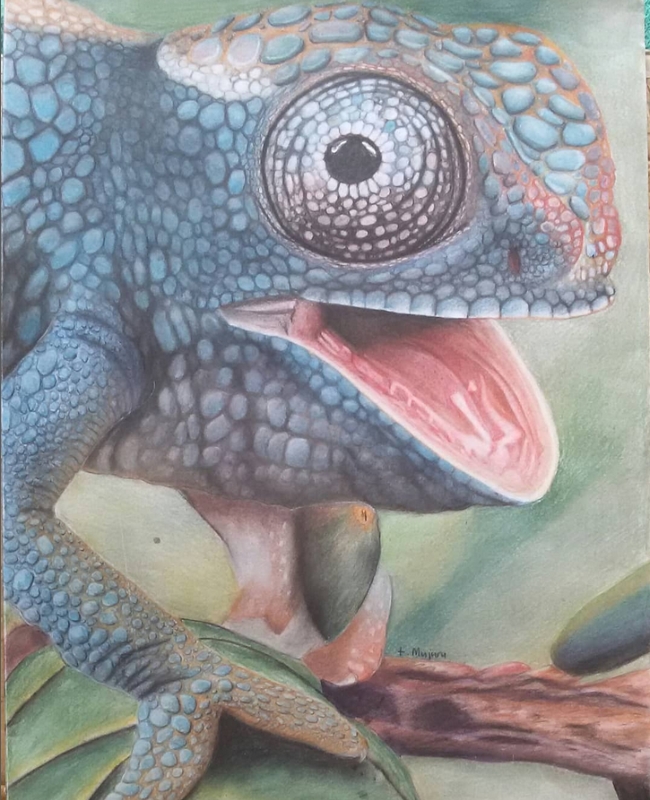Zimbabwe, a landlocked country in southern Africa, boasts a rich tapestry of wildlife. Among the many fascinating creatures that call this diverse land ""Home"", chameleons stand out as unique and enigmatic beings. These remarkable reptiles, with their distinctive appearance and fascinating behaviors, have both intrigued and sparked fear in the hearts of locals for generations. In this blog post, we'll explore the world of chameleons in Zimbabwe, shedding light on what makes them remarkable and why they elicit mixed emotions among the people who share their habitat.

**Chameleons: Masters of Disguise and Adaptation**
Chameleons are renowned for their remarkable ability to change color, a trait that has captured the imaginations of people around the world. In Zimbabwe, several species of chameleons can be found, each with its unique characteristics and habitats. These reptiles are primarily arboreal, meaning they live in trees and shrubs, making them expert climbers and agile hunters.
One of the most common species in Zimbabwe is the flap-necked chameleon (Chamaeleo dilepis), known for its distinctively colored flap of skin around its neck, which can be raised to create a more prominent display when threatened. Chameleons mainly feed on insects, relying on their incredible vision to spot prey from a distance. Their independently mobile eyes can rotate 180 degrees, providing a panoramic view of their surroundings and aiding in hunting.
**Why Locals Are Scared of Chameleons**
While chameleons are relatively harmless to humans and play an essential role in controlling insect populations, they have, over time, garnered a reputation that evokes both awe and fear among Zimbabweans.
1. **Mythical Associations:** In some local cultures, chameleons are associated with mysticism and superstitions. Their ability to change color and their slow, deliberate movements have led to beliefs that they possess supernatural powers or are protectors of sacred places.
2. **Startling Appearance:** To those unfamiliar with chameleons, their unusual appearance, including their independently moving eyes and long, sticky tongues, can be startling or even unsettling.
3. **Folklore and Superstitions:** Chameleons are sometimes seen as omens or symbols of change in Zimbabwean folklore. They are believed to bring both good and bad luck, depending on the circumstances.
4. **Lack of Understanding:** Like many misunderstood creatures, chameleons suffer from misconceptions. Lack of knowledge about their behavior and ecological roles can lead to fear and misunderstanding.
**Conservation Efforts and Education**
Despite their mixed reputation, chameleons play a crucial role in Zimbabwe's ecosystems by helping control insect populations. As awareness about these creatures grows, conservation efforts are underway to protect their habitats and promote understanding.
Educational programs and initiatives are being introduced to dispel myths and foster respect for chameleons and other wildlife. By teaching local communities about the ecological importance of these reptiles, we can work toward coexistence and a deeper appreciation for the natural world.
Chameleons in Zimbabwe continue to captivate and intrigue both locals and visitors. Their unique abilities and cultural significance make them a subject of fascination and, at times, apprehension. Through education and conservation efforts, we can bridge the gap between fear and understanding, ensuring that these remarkable creatures thrive in the wild landscapes of Zimbabwe for generations to come.